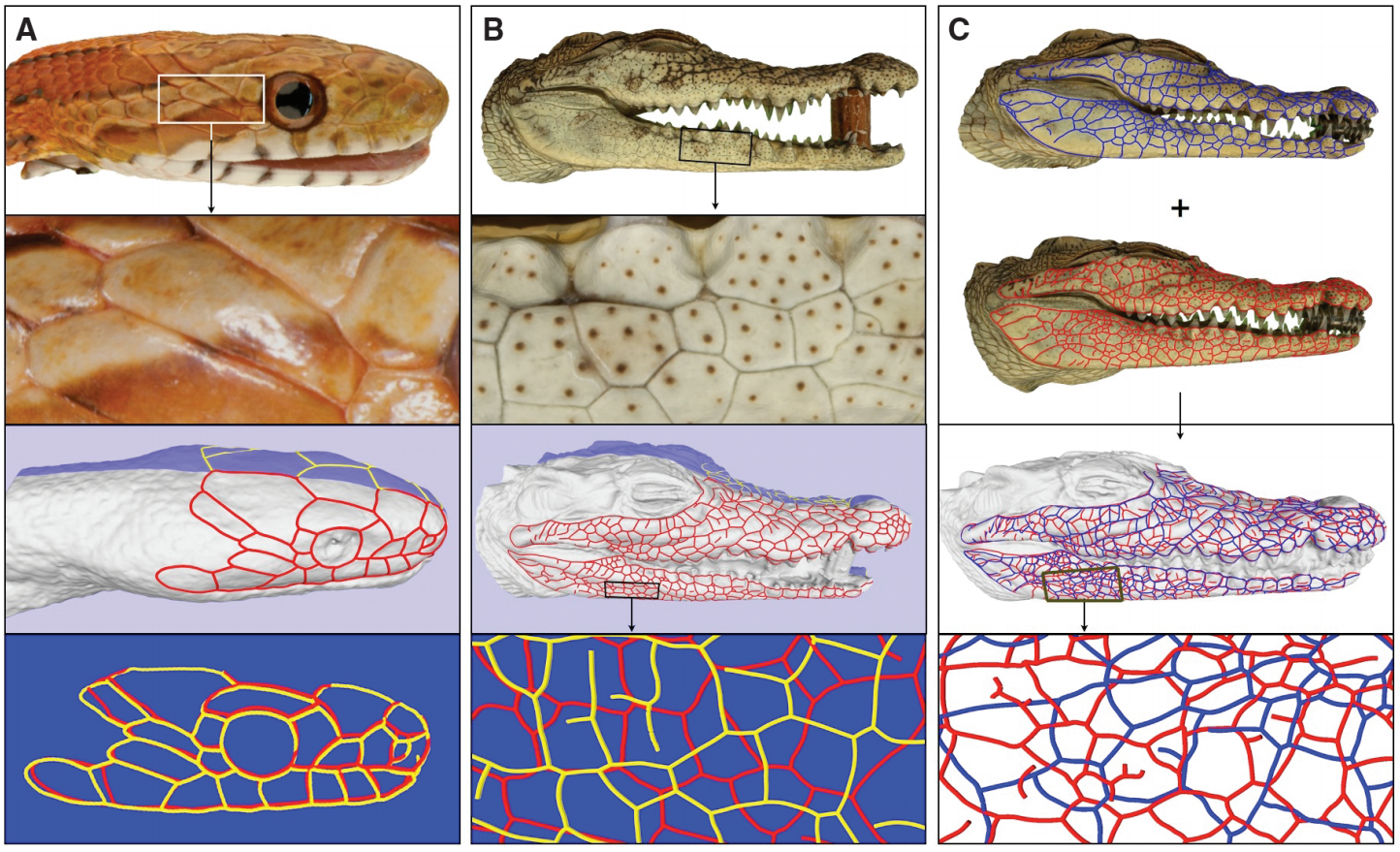Crocodile Head Scales Are Not Developmental Units But Emerge from Physical Cracking
In Science 339, 2013
Abstract
Various lineages of amniotes display keratinized skin appendages (feathers, hairs, and scales) that differentiate in the embryo from genetically controlled developmental units whose spatial organization is patterned by reaction-diffusion mechanisms (RDMs). We show that, contrary to skin appendages in other amniotes (as well as body scales in crocodiles), face and jaws scales of crocodiles are random polygonal domains of highly keratinized skin, rather than genetically controlled elements, and emerge from a physical self-organizing stochastic process distinct from RDMs: cracking of the developing skin in a stress field. We suggest that the rapid growth of the crocodile embryonic facial and jaw skeleton, combined with the development of a very keratinized skin, generates the mechanical stress that causes cracking.
